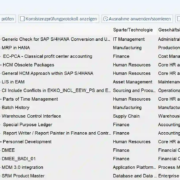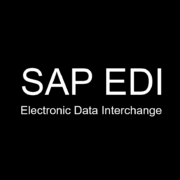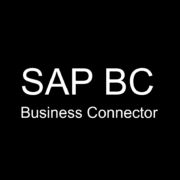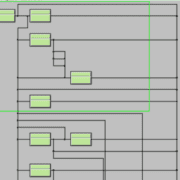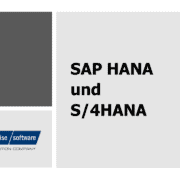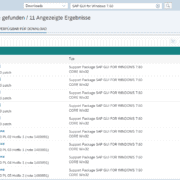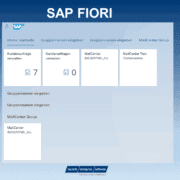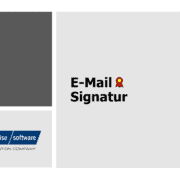CMIS – Content Management Interoperability Services
The CMIS standard stands for “Content Management Interoperability Services”. It is an open standard developed by the organization “OASIS” (Organization for the Advancement of Structured Information Standards). CMIS was first released in 2010. It is supported by a wide range of companies and organizations. These include software vendors, content management vendors, and other technology companies.
What is CMIS?
The goal of CMIS is to provide a standardized interface for accessing content management systems (CMS) and to improve interoperability between different CMS platforms.
The idea behind CMIS is to create a uniform method for accessing content and documents in different CMS systems. It doesn’t matter which vendor developed the software or which technologies are used in the background.
By using CMIS, developers and applications can access, retrieve, create, update, and delete content in CMS systems in a unified way. The framework provides a set of standardized RESTful web services through which these interactions can take place. These services define the functionalities and interfaces that a CMS system must provide in order to be considered CMIS-compliant.
By supporting the CMIS standard, companies can efficiently integrate different CMS systems into their application landscape. This means that applications that use the standard are not tied to a specific CMS provider, but can work with different CMS platforms. This allows for greater flexibility in choosing the right content management solution for a company’s specific needs.
What are the advantages of the standard?
The CMIS standard has established itself as an important tool in the digital business world. This is because it improves collaboration, interoperability and efficiency in the area of content management. By creating a unified interface, the standard facilitates the integration of CMS systems and enables companies to manage their content more efficiently, increase their productivity and optimize their business processes.
What are the features of the CMIS interface?
The CMIS interface provides a range of features that enable applications and developers to interact with content management systems (CMS) and manage content efficiently. The main features that the interface provides are:
- Metadata query: This service can query applications for metadata about documents and content. Metadata is additional information associated with a document, such as the author, creation date, file type, or version. By querying metadata, applications can obtain detailed information about the content in a CMS.
- Retrieving content: The interface allows applications to retrieve the actual content of documents or files from a CMS. This allows applications to view, edit, or download content without having to save the entire file.
- Creating new content: CMIS supports creating new content in a CMS. Applications can create new documents or folders, specifying the required metadata.
- Updating content: The CMIS interface allows applications to update existing content in a CMS. This includes changing metadata or the actual content of a document.
- Content deletion: The service allows applications to delete content when it is no longer needed or out of date.
- Versioning: CMIS supports the versioning of documents. Applications can create, manage, and retrieve different versions of a document.
- Search for content: CMIS allows applications to search for content based on specific criteria. Queries can be made based on metadata, content types, or full-text search.
- Access control: The CMIS interface also supports access control. Applications can control who can access, view, edit, or delete specific content.
- Support for different types of repositories: CMIS is designed to support different types of content management systems. These include document management systems (DMS), enterprise content management systems (ECM), and other CMS platforms.
- Batch processing: CMIS allows applications to bundle multiple operations into a single request. This improves the efficiency and performance of content processing.
The CMIS interface thus offers a comprehensive range of features that enable applications and developers to manage content in CMS systems, interact seamlessly, and streamline content management processes. This standardized interface allows applications from different CMS providers to work efficiently with each other, which improves the interoperability and integration of content management systems.
Is CMIS death?
Currently, the CMIS standard is not “dead”, but there have been some developments and changes regarding its distribution and use.
1. Dissemination: CMIS has been a promising standard for content management system interoperability since its inception in 2010. Many CMS vendors have endorsed the standard and integrated CMIS-compliant interfaces into their products. However, CMIS has not achieved the expected broad adoption in some areas. Some organizations may have preferred other technologies or APIs to address their content management challenges.
2. CMIS support in CMS systems: While the standard is supported by some content management systems, not all vendors have continued to implement the standard in their products. Some CMS platforms may have developed their own proprietary APIs or focused on other integration technologies.
3. Focus on RESTful APIs: With the proliferation of RESTful APIs, some companies and CMS vendors may have started to embrace these more modern API technologies. RESTful APIs often offer easier integration and allow developers to create more flexible and scalable solutions.
4. Evolution of content management technologies: The content management industry has evolved, and there are a variety of new technologies, platforms, and frameworks tailored to specific needs. This variety of solutions may have made CMIS less prominent in some cases.
Although adoption may have declined in some areas, it is important to note that the CMIS standard still exists and may still be relevant for certain use cases. Especially in companies with established CMS systems that support the CMIS standard, CMIS can still be a valuable solution to facilitate interoperability and integration between different CMS platforms.
Does SAP support the standard?
Yes, SAP supports the CMIS standard. SAP Content Management Interoperability Services enables the seamless integration of content management systems (CMS) into SAP applications. This allows companies to integrate various CMS platforms that support the CMIS standard into their SAP systems and manage content efficiently.
SAP has integrated CMIS into its products to improve interoperability and collaboration between different content management systems. This allows companies to continue using their existing CMS systems and seamlessly integrate them into their SAP infrastructure without being limited to a specific CMS platform.
CMIS support in SAP allows companies to use a wide range of CMS solutions. There is a uniform method for accessing content and documents in your SAP applications. This makes it easier to manage information and encourages collaboration between different departments and teams.
However, it is important to note that CMIS support may depend on the SAP version and the specific products a company uses. We recommend that you consult SAP’s up-to-date documentation and product information. This ensures that the desired CMIS support is available in the SAP products that you want to use.




